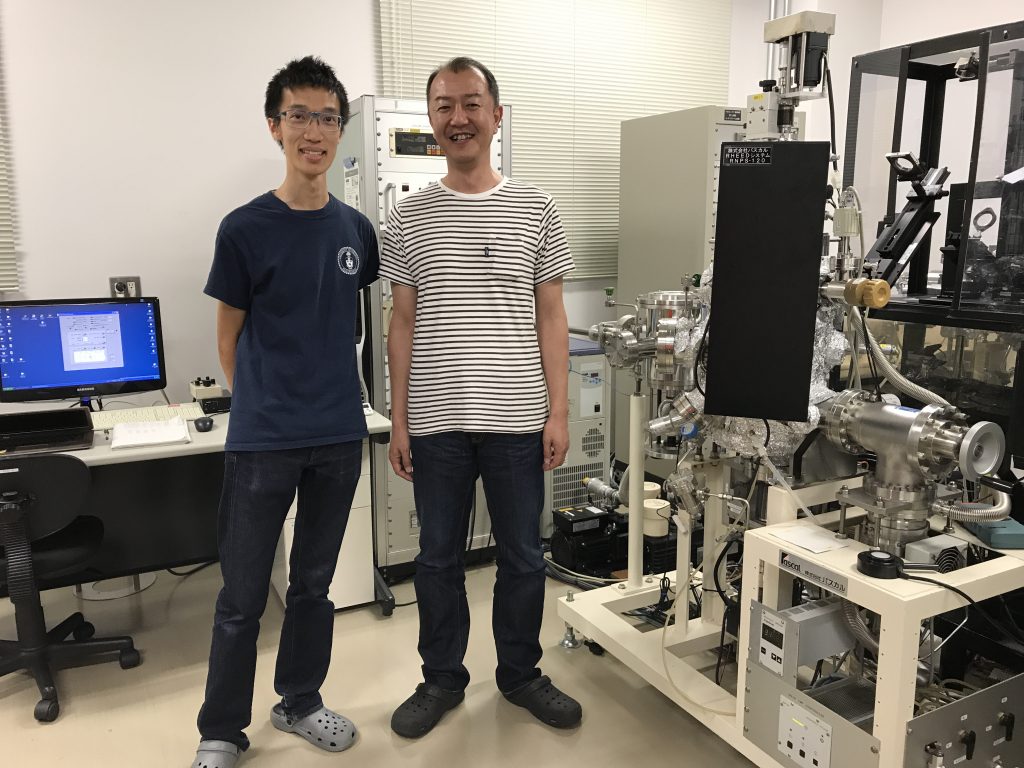
Jason Tam (MSE 1T2+PEY, MSE PhD candidate) gained much more than a trip to Japan when he elected to participate in the annual UT2 Graduate Students Workshop: he gained invaluable international research experience and a published paper. His findings on the wetting properties of rare earth oxide ceramics recently appeared in the Journal of Materials Chemistry A.
Tam, who travelled to Japan for the 2014 workshop and took part in a 2016 summer camp through the program, credits the Department of Materials Science & Engineering’s longstanding relationship with The University of Tokyo for this research success. Meeting with Professor Yuichi Ikuhara of The University of Tokyo and Professor Hiromichi Ohta of Hokkaido University during UT2 led to a two-month research stint in Japan, where Tam accessed Ikuhara’s world renowned electron microscopy group, and Ohta’s expertise in fabricating high quality, epitaxial metal oxide films. Conducting research using highly specialized equipment, Tam was able to produce results and provide significant new contributions to the field of surface wettability.
“This research, and article, came about through the strong relationship between U of T and Japan,” says Tam. “It’s a testament to the international partnerships cultivated by the University and the commitment to advance fundamental research. Now we know that wetting properties of rare earth oxides are impacted by surface crystallographic orientation and airborne contaminants.”
The lead author of Crystallographic orientation–surface energy–wetting property relationships of rare earth oxides, Tam confirmed his hypothesis by using a novel pulsed laser deposition technique to create rare earth oxides with different surface crystallographic orientations and determined their water contact angles. The recipient of the Mitacs-Japan Society for Promotion of Science (JSPS) Summer Program fellowship and access to Japan’s wealth of specialized research equipment, allowed Tam to conduct the research and bring a new perspective to a research study conducted in 2013 determining that rare earth oxides are intrinsically hydrophobic (water repelling). The results reported in 2013 have sparked debate in the surface wetting community, and now Tam’s published research introduces a new conclusion. Fresh rare earth oxide surfaces are hydrophilic (water attracting) and their water contact angles depend on crystallographic orientation. Furthermore, when these surfaces are exposed to ambient air for two days, they became less hydrophilic (higher water contact angle) due to absorption of airborne hydrocarbon contaminants.
“Although the idea of this research seems very simple, such experiments have never been done before,” says Professor Uwe Erb, Tam’s doctoral supervisor. “The results of this fundamental study clarified the controversy in the non-wetting mechanism of rare earth oxide ceramics and provides significant advancement to the surface wettability community.”